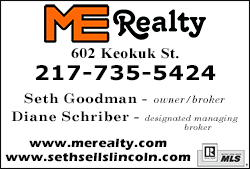Who am I? A South Korean adoptee finds answers about the past — just not
the ones she wants
 Send a link to a friend
Send a link to a friend
 [October 15, 2024]
By KIM TONG-HYUNG, FOSTER KLUG and CLAIRE GALOFARO [October 15, 2024]
By KIM TONG-HYUNG, FOSTER KLUG and CLAIRE GALOFARO
SEOUL, South Korea (AP) — Rebecca Kimmel sat in a small room, stunned
and speechless, staring at the baby photo she had just unearthed from
her adoption file.
It was a black-and-white shot of an infant, possibly taken at an
orphanage in Gwangju, the South Korean city where Kimmel had heard all
her life that she’d been abandoned. But something about the photo — the
eyes, the ears, an uneasy feeling deep in her gut — confirmed what she’d
long suspected: This baby was not her.
Overcome, she started howling like a strange, wounded animal. This photo
meant that the stories she had been told about herself were a lie. So
who was she? Who IS she?
Thousands of South Korean adoptees are looking to satisfy a raw,
compelling urge that much of the world takes for granted: the search for
identity. Like many of them, Kimmel has stumbled into a web of switched
photos, made-up stories and false documents, all designed to erase the
very identity she desperately wants to find.
These adoptees live with the consequences of a tacit partnership by the
South Korean government, Western nations and adoption agencies that has
supplied some 200,000 children to parents overseas, despite warnings of
widespread fraud.
For decades, South Korea tried to get rid of children from biracial
parents, poor families, orphanages and unwed mothers, ignoring illicit
practices. Western families in turn were eager to adopt from abroad,
after access to birth control and abortion crushed the supply of
domestic babies. While many adoptions ended happily, the desires of both
sides also resulted in the unnecessary removal of generations of
children from their families based on fake paperwork.
As Kimmel sat weeping in that room in the Seoul adoption agency, she
knew little of this background. All she knew was that she needed
answers.
She would find them — just not the ones she wanted.
___
Kimmel, an artist, thinks she is about 49; her exact age is one of the
many things about herself she does not know. She throws herself with
intensity into almost everything she does, particularly her
all-consuming quest for her roots.
It wasn’t always that way. Kimmel spent much of her childhood in what
many adoptees call “the fog” — a time of happy ignorance when they are
oblivious to questions about their adoption.
Her parents told her the origin story they’d gotten from the adoption
agency: She had been abandoned as an infant on a street in Gwangju and
sent to an orphanage by police. A slip of paper on her clothing listed
her birth date as the day before: Aug. 4, 1975.
There was no information about her biological mother or father. Her
birth name was either Chung Jo Hee or Chung So Hee — the writing on the
original paperwork was unclear.
She was adopted six months later by a family on the U.S. East Coast.
Each Jan. 21, her parents would celebrate “Arrival Day,” a sort of
second birthday that she saw as slightly embarrassing but sweet. They
would display her documents and baby pictures.
But a small detail nagged at her: One photo that her parents showed from
South Korea didn’t look much like those of her in the United States.
When she asked why, her parents just told her that babies change.

“I think my parents were just happy to have got a child,” she says,
describing them as an idealistic couple who couldn’t have comprehended
the deeper problems surrounding adoptions from South Korea.
In 1986, the family traveled to South Korea, where adoption workers told
them to visit a different orphanage than the one they’d thought Kimmel
was from. It was called Namkwang, in Busan. They found no record of
Kimmel.
Kimmel didn’t think much of it. Back in Maryland, she was living a
suburban American childhood of Michael Jackson and Madonna and malls.
She went to college, moved to Los Angeles, taught and ran an art school.
But a sense of loneliness crept in and became increasingly harder to
ignore. Every now and then, the thought occurred to her: Was she just a
girl from Maryland? Was that all?
“It didn’t seem very exciting,” she says. “It just seemed kind of like a
blank slate.”
Kimmel marks 2017 as the year when the fog began to clear. One day,
while searching the web for Korean makeup tutorials, she Googled “Korean
adoptions,” and fell into a whole new world.
In 2017, she went to a three-day event in San Francisco with hundreds of
Korean adoptees. The new ideas and friendships prompted a deep sense of
urgency.
She realized she was running out of time. If she was 42, how old would a
birth parent be?
How late was too late to find your roots?
___
The Korean adoptee diaspora is thought to be the largest in the world,
with thousands returning to South Korea in recent years to look for
their birth families. Fewer than a fifth of those who asked the South
Korean government for help with their search were successful, records
show. A big problem is that documents were often left vague or outright
falsified to make children look “abandoned” even when they had known
parents.
In 2018, Kimmel shut down her art classes and made a trip to South Korea
that so many had done before her. She was brimming with excitement.
The clinic where Kimmel was supposedly dropped off was closed, but a
former doctor who had worked there recalled an orphan who had been found
in front of it.
“Oh God, this is me,” Kimmel thought, tears welling in her eyes.
But it was the first of many false starts. Unlike Kimmel, that orphan
had been looked after by a grandmother for a while.
Kimmel next visited Korea Social Service in Seoul, her adoption agency.
There, she argued heatedly with a social worker who had started working
at KSS in 1976, the year of her adoption.
Could she get a copy of her file? No.
Could she photograph her file? No.
Could the social worker photograph or photocopy her file for Kimmel? No.
Kimmel realized the agency did not see her identity as hers.
“Never in my life have I been more angry,” she says. “There’s always
this typical argument between adoptee and a social worker in Korea where
the adoptee says, ‘That’s my information.’ And the social worker says,
‘That’s our information. It doesn’t belong to you.’”
Kimmel fought until she was allowed to see her file. In the very back,
she discovered a small square paper envelope with a photograph.
It was similar to the one she had questioned with her parents, but shot
from a different angle. And this photo made it clear: The girl was not
her.
“I’d opened this Pandora’s box,” she says. “And I didn’t feel like I
could close it."
She joined multiple online forums where adoptees shared stories about
their lives, their birth searches, their grievances. She posted photos
of the girl in her adoption file and of herself when she first arrived
in the United States, asking if they looked like the same person.

Some said no. Others, including parents of adoptees, reacted as Kimmel’s
parents had, saying “babies change.” A new hunch began to emerge: Had
KSS switched her identity with another girl?
It had happened before. During a stay in Europe, Kimmel had been
startled to meet several adoptees in Denmark who at the last minute were
given the paperwork of other children.
Kimmel had her adoption photos cross-checked by a dysmorphologist, a
medical expert trained to identify birth defects in children, mainly
from facial features. He saw distinctive differences in the ears and the
area between the nose and upper lip. His conclusion: These were likely
different girls.
“At that point I realized, oh my God, I went through all of this trial
and trepidation to photograph a file that’s not really mine,” Kimmel
says. “It has my adoptive parents’ names; it’s a file that’s related to
me. But the actual physical child is not me; the identity is not mine.”
So who was Kimmel? And who was the other girl?
___
In 2019, she returned to KSS in South Korea. This time, the same social
worker allowed Kimmel to search the agency’s file room herself.
In the paperwork for 1976, Kimmel found what she believed was her “real
file,” with five identical black-and-white photos of a girl and a slide
negative. She was struck by the similarities to early photos of herself
in the United States.
“I felt like I was looking into my own soul,” she says.
At last, a breakthrough. Yet the details were perplexing.
The documents said the girl had serious leg deformities that made her
unable to sit. But the medical notes written just days earlier described
a healthy girl with nothing more than a cough and diarrhea. Had the
agency somehow blended information from two different girls?
She again consulted the dysmorphologist, this time to compare the photos
she had just found to those of herself in the United States. She
expected a match. But once again, he concluded that they were different
girls.
Kimmel was shaken.
She felt such a connection with this girl. Could she be a sibling? Maybe
even a twin?

___
Kimmel threw herself into examining the complex numerical system KSS
used to log adoption cases, based on hundreds of case numbers she
collected from other KSS adoptees. In 2021, she revisited the agency
with a long wish list of files.
The meeting, which the AP attended, resulted in a tense back-and-forth
for hours with the same long-time social worker. Kimmel struggled to
contain her fury, waving her hands in disgust.
“You lied,” she fumed.
Visibly irritated, the social worker shuttled back and forth from the
room to a document storage area. But each of the files she brought out
had no information on Kimmel.
The social worker looked drained. She denied that the agency was
withholding information. But she had no explanation for why it couldn’t
present a single document with Kimmel’s information. Or why the photo in
her file was of a different girl. Or why KSS had told her adoptive
parents she was from the Namkwang orphanage in Busan.
The pressure grew until the social worker acknowledged a startling
practice: Switching children’s identities was common among South Korean
agencies during the adoption rush of the 1970s and 1980s.
[to top of second column]
|

Rebecca Kimmel, center, eats with fellow Korean adoptees, Jenny
Kelly, left, and Michelle Leco, right, at Yetgol Old Village Korean
BBQ Sunday, Jan. 28, 2024, in Seattle. Kimmel still does not know,
and may never know, who she is. All she knows is who she's not. (AP
Photo/Lindsey Wasson)

When children died, became too sick or were retaken by birth
families, the agencies simply swapped in other children. Western
agencies or adopters were willing to take any child of the same sex
or similar age, because “it would take too much time to start over
again,” the KSS social worker said.
Could Kimmel have been one of those children?
“I can’t say with confidence that there’s absolutely no possibility
that a different child was sent from here,” the worker confessed.
The worker has retired, and AP has been unable to reach her since.
KSS did not respond to requests for comment.
Switched documents may be one reason agencies are so reluctant to
fully open their files to adoptees, says Lee Kyung-eun, a former
director of childcare policy at South Korea’s Health and Welfare
Ministry. Even the agencies can’t tell which records are real. Some
adoptees the AP talked with spent years getting to know people they
were told were biological parents, only to have DNA tests show they
weren’t related.
“It could be less about hiding records," Lee says, "and more about
not having much to give.”
___
Kimmel was exhausted. But she refused to accept that this was all
she was going to get.
Still thinking she was a twin, she had been scouring message boards
for twin sisters looking for their birth parents, or birth parents
looking for twin girls. Now she had one clue left: A message written
by an old man named Park Jong-kyun, looking for twin girls
relinquished for adoption sometime between 1973 and 1976.
Park had left detailed information about his full name, his wife’s
names, their sons’ names, their birth dates. He described a small
village, which Kimmel tracked down on the southern South Korean
resort island of Jeju.
Kimmel went. Within hours, with the help of local police, she met
Park.
Park is a slight man with kind eyes, who lives in a small, weathered
house surrounded by tangerine bushes and flowers that remind him of
his daughters. His twins were born at a time when he and his late
wife were struggling financially to raise three sons. His wife
needed an emergency C-section, which the couple couldn’t afford.
The hospital persuaded them to give away the twin girls to relieve
the financial burden and toll on his wife’s health, Park says. He
named his girls after the Korean words for rose and chrysanthemum.
He wrote the twins’ birthdate – May 11, 1973 – on two pieces of
paper and put them in their clothing, hoping to find them someday.
Park searched for the girls for decades, putting in requests with
the government and Holt Children’s Services, South Korea’s biggest
adoption agency. Government officials told him his twins were likely
adopted to the United States through Holt, based on their birthdate
and hospital.
In 2018, he visited Holt and the government agency that helped with
adoption searches. He sent them boxes of Jeju tangerines, hoping
they would remember him and look for his daughters.
When Kimmel came to Jeju in 2021, Park was excited and very
surprised. They spent days together, eating in restaurants, talking
and laughing as they communicated with translation apps. Park taped
Kimmel’s U.S. baby photos on a wall of his small home.
Yet he felt instinctively that she was not his daughter. His doubts
were confirmed when a DNA test showed no relation.
Kimmel was devastated. But in the wake of her grief, she realized
that his twins could still be somewhere out in the world.
Kimmel arranged to have kits from an American DNA testing firm sent
to South Korea. She traveled back to Jeju to test Park and a nearby
island to test his son.
It took just three weeks for the company to locate Park’s daughters
— Becca Webster and Dee Iraca.
___
The twins are very different.
Webster, a nanny with a son in college, is whimsical, chatty and
easygoing. Iraca, who works as a chef and dietitian, is meticulous,
serious and always on the go. Her nickname is Speedy Dee-Dee.
Those differences are what prompted them to take a DNA test in the
first place; they wanted to confirm for themselves that they are
biological sisters.
Adopted by the same American family, their files described them as
abandoned in front of a hospital. Anytime they thought about
searching for their birth parents, they felt overwhelmed.
“Abandoned is such a hard word….It feels so hollow,” Webster says.
“When you’re told a narrative that you’ve been abandoned, left as a
baby, where are you going to go with that?”
They traveled to South Korea for the 2018 Winter Olympics and
visited Holt’s office in Seoul, just months after Park went there. A
social worker for Holt told the twins that the agency had no further
documents for them.

Which led them to wonder: If they’d just been left on a doorstep,
how could anyone have really known they were twins?
The results were reassuring; they were indeed sisters. But the test
led to a baffling turn: A stranger sent them a note pointing out
that the DNA site also registered a man called “Mr. P” as their
father.
They were stunned. They asked the DNA company if this was a scam. It
wasn’t.
The stranger turned out to be Kimmel. She told them that their
father had been looking for them for decades.
“Even now sometimes, it feels like a dream,” Iraca says.
They felt guilty that so many adoptees, including Kimmel, had been
desperately searching for their families, and their father had been
searching for them. But they hadn’t been searching.
“It wasn’t about not wanting to know,” Webster says. “It was about
cutting that emotion off because we didn’t think we had a choice.”
In October 2022, the twins went to South Korea. Park waited for them
anxiously at the airport, holding up a handwritten English sign that
read “Dee, Becca, welcome to Korea.”
He brought two bouquets of flowers: one roses and the other
chrysanthemums. He made sure to give the right bouquet to the right
daughter.
He hugged them. “Thank you for waiting for me,” he said.
He spoke only Korean. They spoke only English and came across as
unmistakably American. At one point, as they tried to walk inside
his home, he said, “No, no, no, no”; they hadn’t followed the Korean
practice of taking off their shoes.
But for all the differences, the twins felt an instant connection.
Park showed them photos on his wall of his own father and mother.
They met their Korean brother and their uncles and aunts, who hosted
a welcome party. These strangers who were somehow still family
touched the sisters’ faces and speculated on who looked like whom.
Park gave each of them a hanbok, a traditional Korean garment. They
wore them to a Buddhist temple where there’s a memorial photo of
their mother.
Back in North Carolina, the sisters are now taking care of their
adoptive mother, who has health challenges, and it’s difficult to
find the time and money to visit South Korea. But they want to make
the effort to get to know their father..
They call him K-Dad, to differentiate from their adoptive father,
who died more than a decade ago. He sends them packages of seaweed
and green tea.
They are left with mixed feelings. After all, they ended up happy in
America. Yet their happiness was built on an injustice that hurt
thousands, including their birth father. They resent that they
learned of their identity from a stranger, and that they were too
late to meet their mother.
“We have both built such incredible lives that it’s hard to look at
that and anything negative about it,” Webster says. “(Yet) there’s a
part of it that we feel sad.”
Park, too, has mixed feelings. He wears a huge smile when he talks
about meeting his daughters again. Their pictures cover his walls,
along with taped memos of English words and expressions. Eager to
talk with them, he has bought several English books, but says he
isn’t getting anywhere.

It was painful for him to see his daughters leave. He’s frustrated
that Holt, which didn’t respond to AP’s request for comment, missed
an opportunity to reunite them as early as 2018. In his mid-80s and
still struggling financially, Park can’t afford a long and expensive
trip to America.
“It’s sad,” Park says. “There’s so little time left for me.”
___
That still leaves Kimmel.
She feels a bittersweet thrill that she managed to reunite the twins
with their father. They joke that they are triplets — two Beccas and
a Dee.
Kimmel also spends hours helping and advising other adoptees. She is
a key contributor to an adoption-focused website called Paperslip,
named after the word that frequently — and sometimes falsely —
appears in the files of KSS adoptees described as abandoned.
Her adoptive parents, who could not have birth children, have
struggled with their unintended role in a deeply flawed system. Her
mother is afraid that Kimmel’s obsession with her past has taken a
toll on her well-being. Her father says he would not have considered
international adoption “had I known of the deception and what it has
done to so many adoptees in their search for their identity.”
Kimmel still does not know — and may never know — who she is. All
she knows is who she’s not. And that leaves her in limbo, torn
between a mind that sees no point in searching further and a heart
that can’t seem to give up.
“I’m almost 50 years old, and I still don’t know when I was born, or
what city I was born in,” she says. “I don’t know my birth parents.
There’s nothing that I know about myself as real.”
She often looks at the photo of the girl she still believes is her
twin.
Like Kimmel herself — like thousands of others — her story remains a
mystery.
___
PBS Frontline’s Lora Moftah contributed to this report.
This story is part of an ongoing investigation led by The Associated
Press in collaboration with FRONTLINE (PBS). The investigation
includes an interactive and documentary, South Korea’s Adoption
Reckoning.
All contents © copyright 2024 Associated Press. All rights reserved
 |